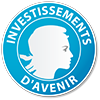

List of M1 internship subjects 2021-2022:
- Analysis of a potential seasonality in the distribution of the Echinococcus multilocularis parasite in an area of high endemic alveolar echinococcosis. UMR 6249 CNRS – Chrono-Environment Laboratory, Besançon, France.
- Impact of watershed disturbances on the origin and transfer of consumed carbon in Canadian boreal forest lakes. UMR 6249 CNRS – Chrono-Environment Laboratory, Besançon, France.
- How POPs concentrations can affect bat populations? Indices of pressures on insect prey assemblages in Arquian, France. UMR 6249 CNRS – Chrono-Environnement Laboratory, Besançon, France.
- Analysis of the floristic richness of permanent grasslands as part of the Payments for Environmental Services project. Interdepartmental Chamber of Agriculture Doubs-Territoire de Belfort, France.
- Microbial biomass, respiratory and enzymatic activity of soils located in the area of the former lead smelter Metaleurop Nord. UMR 6249 CNRS – Chrono-Environnement Laboratory, Besançon, France.
- The ecology and conservation of Dicranum spurium (1801) in European dry heath habitats in the Hauts-de-France region. Conservatoire d’Espaces Naturels (CEN) des Hauts-de-France, Merlieux-et-Fouquerolles, France.
- Evaluation of individual and combined effects of microplastics and mercury on Chironomus riparius. UMR 6249 CNRS – Chrono-Environnement Laboratory, Besançon, France.
- Moving from haematological parameters analysed at population level to individualised health assessment: reference intervals and blood profiles in small mammals. UMR 6249 CNRS – Chrono-Environnement Laboratory, Besançon, France.
- Paleolimnological diagnosis of Lake Bonlieu (Jura). UMR 6249 CNRS – Chrono-Environnement Laboratory, Besançon, France.
- Regional Action Program for Ponds and study of the network in the Ardennes agricultural environment. ReNArd Association, Poix-Terron, France.
List of M1 internship subjects 2020-2021:
- Analysis of the ecological distance between the predictions of biotopes from the computer model of the CarHab program and the data observed for the preparation of the 2021 sampling campaign. Conservatoire Botanique National de Franche-Comté (CBN FC), Besançon, France
- The European green toad’s movements and direction in agricultural landscapes during the breeding period. Institut Pluridisciplinaire Hubert Curien (IPHC), Strasbourg, France.
- Population dynamics of wintering birds on Lake Remoray over the last 33 years. National Nature Reserve (RNN), Labergement-Ste-Marie, France.
- Statistical analysis of survey data from a Saxifraga hirculus reintroduction in the French Jura. Conservatoire Botanique National de Franche-Comté (CBN FC), Besançon, France.
- Study of the terrestrial habitat of the European Green Toad (Bufotes viridis): use of radio telemetry to determine the home range of this species. Institut Pluridisciplinaire Hubert Curien (IPHC), Strasbourg, France.
- Ecotoxicity assessment of acid mine drainage receiving waters using chironomid larvae: remediation trials. UMR 6249 CNRS – Chrono-Environnement Laboratory, Besançon, France.
- Assessment of mobility of trace elements along bat guano and analyses of trace elements and POPs concentrations in bat guano over time. UMR 6249 CNRS – Chrono-Environnement Laboratory, Besançon, France.
- Impact assessment of artificial landscaping and compensatory measures on the diversity of terrestrial invertebrates in Malagnou Park (Geneva). Museum d’Histoire Naturelle de la ville de Genève (MHN), Geneva, Switzerland.
- Analysis of data from monitoring the population of breeding forest birds using the IPA method in the Ravin de Valbois National Nature Reserve. Ravin de Valbois RNN, Cléron, France.
- Margins of fear: Using management practices to enhance biological control through predation of Common voles in cropland. UMR 6249 CNRS – Chrono-Environnement Laboratory, Besançon, France.
- Characterization of the Asian Monsoon in the Cenozoic by isotopic analysis of dental enamels of large mammals of the Oligo-Miocene. UMR 5554 ISEM, Montpellier, France.
List of M1 internship subjects 2019-2020:
- Ecotoxicity of contaminant mixtures to soil invertebrates: review, study case and involvement in risk assessment. UMR 6249 CNRS – Chrono-Environnement Laboratory, Besançon.
- Effectiveness assessment of MEDINBIO wireworm biological control by attract-&-kill strategy. MEDINBIO, Belgium.
- Study of the evolution of the populations of Orobanche purpurea according to the different management measures, within the framework of compensatory measures relating to the construction of land transport infrastructures. Systra, France.
- Behavior of the Smooth-Coated Otter (Lutrogale perspicillata) at den site in mangrove ecosystem Goa, India according to periods of the day. Wild Otter Research, Goa, India.
- Comparison of sound propagation in tropical ecosystems for ecological applications. Université Aix Marseille/IMBE, France.
- Proposal and application of a method of identification of terrestrial spotted salamanders by photographic analysis software to estimate population parameters by Capture-Mark-Recapture method. LPO Franche-Comté, Besançon, France.
- Strategy of spatio-temporal occupation of artificial nests by a colony of house swallows in Besançon (25). LPO Franche-Comté, Besançon, France.
- Effects of temporal variation in browsing patterns on Swedish boreal forests recruitment and growth. Swedish University of Agricultural Sciences, Sweden.
- Climate, Synchrony and the Spruce budworm. Atlantic Forestry Centre, Canada.
- Remote sensing study of seasonal home range usage of Papio cynocephalus in miombo woodlands with the aid of the normalized difference vegetation index (NDVI). UMR 6249 CNRS – Chrono-Environnement Laboratory, Besançon, France.
- Survey and monitoring of commercial fish of the coral reefs in the North-West coast of Mahé island – Seychelles. Global Vision International (GVI), Mahe, Seychelles.
- Winter moose habitat assessment: location and characteristics. Deep Karelia, Finland.
- Development and validation of an inventory protocol for protected semiaquatic micromammals: Southwestern Water Vole (Arvicola sapidus), Mediterranean Water Shrew (Neomys anomalus) and Eurasian Water Shrew (Neomys fodiens). Faune INNOV’ R&D, France.
- Study of European Hedgehog (Erinaceus europaeus) populations and their spatial and temporal distribution in the departments of Doubs (25) and Territoire de Belfort (90).FNE Doubs, France.
- Determination of the ecological and environmental parameters of a hydrosystem influencing the presence of the Eurasian beaver – analysis of a hydrosystem favourable to the species in Bourgogne Franche-Comté. La Fédération Jura Nature Environnement, Lons-Le-Saunier, France.
- The behavior of smooth-coated otter (Lutrogale perspicillata ) near the holt according to environmental variable. Wild Otter Research, Goa, India.
- Systematic review of the diet of the bank vole and the tundra vole. Inland Norway University of Applied Sciences, Elverum, Norway.
List of M1 internship subjects 2018-2019:
- Assessment of wetlands functions and impacts of the implementation of an “avoid, reduce and compensate” approach in the context of a ZAC (joint development zone) creation. Biotope, Paris.
- Statistical study of the monitoring of reinforcement of Saxifraga hirculus L. populations in the French Jura. National Botanic Conservatory of Franche-Comté, Besançon.
- Urban mammal behaviour, welfare and disease in Brighton. University of Brighton, UK.
- Analysis of post-nuptials migratory flows of birds on a site of wind turbines establishment. CD Eau Environnement, Maizières.
- Study of reptiles and amphibians populations in Montbéliard agglomeration. Société d’Histoire Naturelle du Pays de Montbéliard, SELONCOURT.
- Quantitative reconstruction of Holocene summer temperature in the Kapissilit area (south –western Greenland) from Chironomid assemblages of the « Little Kapi lake » sediment record. UMR 6249 CNRS – Chrono-Environnement Laboratory, Besançon.
- Sub-lethal effects of pesticides: metabolic changes in Daphnia magna exposed to multiple stress. Department System-Ecotoxicology, Helmholtz Centre for Environmental Research – UFZ, Leipzig.
- Role of pollinators in the persistance of blueberry: analysis of data coming from full field experiments. Biological study Centre of Chizé, Villiers-en-Bois.
- Exposure of Red kite nestlings to chemicals and consequences on their health status. UMR 6249 CNRS – Chrono-Environnement Laboratory, Besançon.
- Microplastics in the terrestrial environment: implications for land snails (Cantareus aspersus). UMR 6249 CNRS – Chrono-Environnement Laboratory, Besançon.
- Implementation of two floristic inventories in order to monitor the variations of pressure applied by ungulates on forest flora. Regional Nature Park of “Ballon des Vosges”, Munster.
- Study of hedgehog (Erinaceus europaeus) populations and their spatial distribution around Besançon (25) and Belfort (90), through a participative survey approach. France Nature Environnement, Besançon.
- Browsing impacts of introduced Sambar Deer (Rusa unicolor) in the Mountain Ash forests of the Victorian Central Highlands, Australia. Australian National University, Canberra.
- Geochemical study of a peat sequence in the Morvan region: tracking former mining activities from the Iron Age to AD 1000. UMR 6249 CNRS – Chrono-Environnement Laboratory, Besançon.
List of M1 internship subjects 2017-2018:
- Assessment of the ecological continuum between ponds. FRAPNA LOIRE, Chambeon.
- Analysis of bioaccoustics recordings from the Tchernobyl Exclusion Zone. University of Salford, Salford.
- Impacts of recent and past anthropogenic activities on ecosystems of North Vosges. UMR 6249 CNRS – Chrono-Environnement Laboratory, Besançon.
- Study of low concentration of Chlordécone in Hydra attenuata. University of Aix-Marseille, Marseille.
- Impact assessment of road traffic on amphibian populations of the South of Grosbuissons’ road in Chaux Forest. DOLE ENVIRONNEMENT, Dole.
- Environmental risk assessment of polluted soils by metallic trace elements (TM) and polycyclic aromatic hydrocarbons (PAH). UMR 6249 CNRS – Chrono-Environnement Laboratory, Besançon.
- Participation in the development of a coastal riparian macroinvertebrates index for the assessment of the ecological condition of lakes in a context of European Framework Directive: specific case of important tidal range reservoirs. UMR 6249 CNRS – Chrono-Environnement Laboratory, Besançon.
- Temporal evolution of Anatidae and wintering coots populations in the National Nature Reserve of Chérine, from 1986 to 2016. UMR 7372 CNRS – Biological Study Center of Chizé.
- Impact of an ancient Uranium mine on Tit biology. UMR 6249 CNRS – Chrono-Environnement Laboratory, Besançon.
- Effects of diminution of inputs, phytosanitary products and irrigation in arboriculture (walnuts’ operation) in the context of Grésivaudan’s river management. Experimental station of walnuts’ operation, Rhône-Alpes, Chatte.
- Effects of landscape elements on earthworms’ communities. INRA, Versailles.
- Retrospective assessment of overall decline of chiropterans in Europe since XXth century. UMR 6249 CNRS – Chrono-Environnement Laboratory, Besançon.
- Role of food webs in survival of pathogenic bacterium in wetlands : significance of phyto- and zooplankton communities. UMR 6249 CNRS – Chrono-Environnement Laboratory, Besançon.
- Effects of residual organic products and legumes on earthworms communities. INRA, Versailles.
- Implementation of badger (Meles meles) monitoring in the context of the deployment of vaccination method through baits at the operational scale of the department (Côte-d’Or). Health protection group of Côte d’Or, Bretenière.
We use cookies to provide a high quality user experience on our site. If you continue to use the site we will consider that you agree to the use of cookiesOkFind out more





